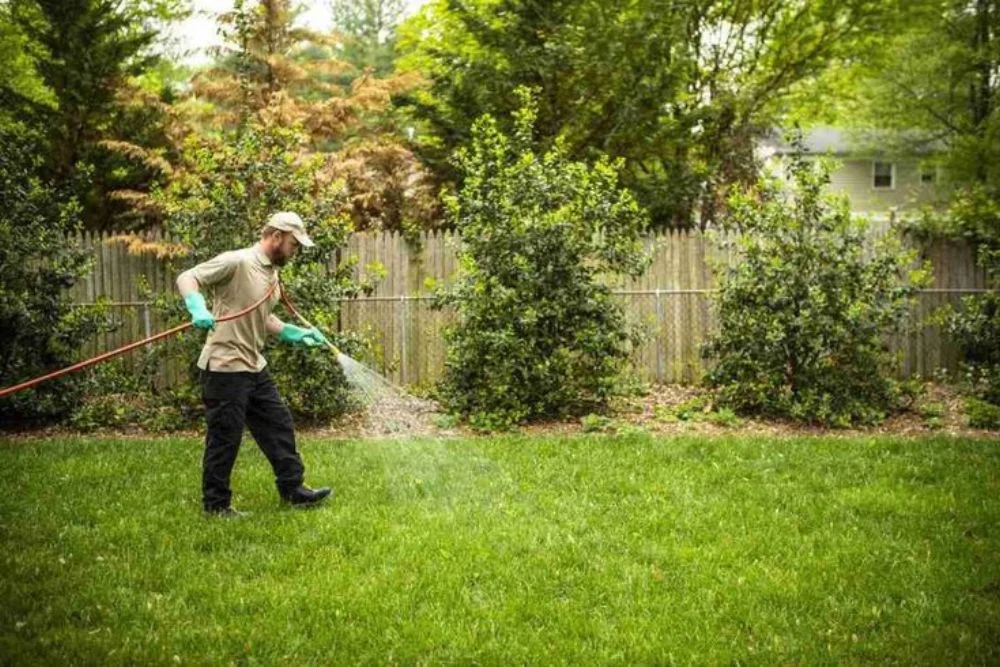As Naperville homeowners, you know the feeling all too well-you spend hours prepping your lawn only to have grubs ruin the roots of your grass or chinch bugs cause ugly brown spots throughout your yard. With the ideal climate for several lawn pests brought on by a humid continental climate, timing is essential for effective treatment. Naperville sees 38 inches across the course of a whole year, and given how sudden temperatures can swing to extremes here, stress tech grass and pest issues really add up if not treated on time.
However, with the peak growing season in full swing and outdoor entertaining rights the most prominent investment many residents make in their homes, it can be frustrating to turn a beautiful lawn into a battleground for a pest war. Although the allure of DIY solutions is strong, the involvement of local pest cycles and environmental factors often demands professional pest control intervention for lasting results and protecting your lawn investment.
Which Is The Best Time Of The Year To Treat Lawn Pests In Naperville & Why?
Naperville lawn pests are most active and treatable from May through July, making this the ideal time to treat the problem.
Peak Activity Period
Soil temperatures are in the perfect 55-65°F range when we get to late spring in Naperville, and that spurs pests to start coming out of hiding. This is when grubs begin to move up into the soil, chinch bugs start feeding vigorously, and many other common Illinois pests initiate their life cycles. According to the University of Illinois Extension, this is the narrow time frame in which nearly 70% of lawn pest damage occurs in Northern Illinois.
Weather Advantage
Typical weather patterns in Naperville during the May to July time window deliver reliable moisture and more moderate temperatures, which are ideal for maximizing soil penetration by pest control treatments. On average, May receives 4.2 inches of rain, which sets the perfect stage for heavy soil-applied treatments to hit their targets and remain unapologetically washed away by torrential rains.
Prevention Before Damage
By treating during this time, you eliminate the insect before they have the chance to do any significant damage. For example, grubs can be targeted earlier in the spring while they are smaller and before they develop into bigger, more destructive larvae that can destroy root systems by late summer.
Chemical Effectiveness
Pest control products are generally more effective when applied when the pest is actively feeding. Warmer soil temperatures in late spring in Naperville increase both chemical absorption and biological activity, allowing the treatments to be used appropriately for the target.
Why Calling Experts Is Important Than DIY
One thing to remember is that the ultimate success of DIY pest control lies in identifying the pest species attacking your Naperville lawn, and this may require an expert to identify. Identification errors result in improper treatments, money wasted, and more destruction. They tend to provide one-size-fits-all answers, which overlook Naperville’s specific soil composition and the various local pest populations.
Professional services such as Pointe Pest Control work with Naperville lawns, knowing that hills, clay-heavy soil in some of the city’s established neighborhoods, and drainage issues in many of the more recently built neighborhoods present challenges that not all yard care companies are prepared for. The team is locally based so that they can plan treatments according to local pest cycles and weather.
Using the wrong chemical at the wrong time can exacerbate pest problems by killing beneficial insects that naturally suppress pest populations. Commercial-grade products and application equipment used by professionals produce results that last longer than anything a consumer can buy, ultimately saving you time and money while protecting your investment in your lawn.

